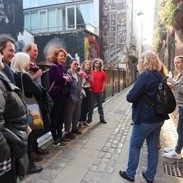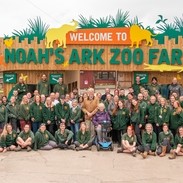Reaching your audience on social media and email
Getty Images/E+/JohnnyGreig

Digital marketing on social media
Social media and email are essential for any digital tourism marketing. Here’s how to use them effectively in your business.
What is it?
Social media platforms are powerful tools for engaging with potential customers and building your own online community. Most platforms are free to use, making them a cost-effective way to reach your audience.
The social media marketplace is huge. the biggest platforms are Facebook, YouTube, Instagram and TikTok. More than half the world’s population uses social media – almost five billion people.
How do I use it?
Which platforms you decide to focus on will depend on your business. Some businesses will be better suited to using imagery and video on Instagram or TikTok, while others might work better on more text-based platforms like Twitter.
Social media content is designed to be shareable, exposing your business to new audiences and increasing brand awareness. Hashtags are a vital way for users to find and engage with your content. They provide a shorthand for users to link and find similar content e.g. #VanLife, #WoodlandWalks, #SummerHolidays, #GreatMuseums.
Paid posts
Most platforms now offer paid advertising services, which can be tailored to users based on their location, interests, followers and even their purchase history. These adverts can drive more traffic to your website through calls to action and links.
Other considerations
Social media takes time commitment – so it’s sensible to choose one or two channels and focus on them. It’s important to keep active on them, as customers will interact directly with you and expect a response.
New features are also frequently released on different social media channels, which means you have to stay across the latest developments in order to get the most out of them.
Our podcast has been well-received
We regularly reference Harry Styles on social media and link it back to our museums - a really popular thread matched Harry’s outfits to items in our collection. Through making references to popular culture and being playful with content, we’re showing audiences unique objects in our collection, while also being fun – because museums are fun too!
We have carried our Twitter tone of voice through
digital marketing campaigns, for instance our campaign Ey-up Leeds, was aimed at a local audience. We also released our podcast, Museums n’That. It has been really well received.
Leeds Museums & Galleries
Which social media channel is for my business?
Find useful resources to help boost bookings using social media
Facebook: Tourism businesses can create pages to share news and information on this multipurpose social media platform. Customers can leave reviews and interact with companies directly. It also has ad features.
Instagram: The social media platform for photo and video-sharing, can be used by businesses to build a brand story. It also has advertising and shopping features.
WhatsApp: This messaging app, primarily for one-to-one messaging and group messaging can be used by tourism businesses to communicate with customers.
Twitter: The online news social media site has personal and professional accounts tweeting in it and can be a useful ‘shopfront’ for promoting tourism businesses and updating the public.
YouTube: Users can create their own channel to share videos and build a following. Videos hosted on YouTube can be embedded in your website.
TikTok: The most recent social media platform to gain a large user base, TikTok is designed for short video sharing. It has a range of features for anyone to create and share videos, and an emphasis on fun and humour, for younger markets.
Pinterest: The social media platform for creating virtual pinboards can be used by tourism businesses to create their own Pinterest profile and pins. It can be a way of driving more traffic to your own channels for customers looking for inspiration.
Snapchat: Companies can have public profile pages on this image-messaging service and advertise on the platform. It has a range of features for quick image editing and sharing, including augmented reality.
The Collection, Lincolnshire Museums
The Collection - Lincolnshire County Council

“Both Facebook and Instagram reach the largest audiences, are quick and easy to use and are the easiest way to let visitors know what’s going on. Through our shared attraction account @lincsmuseums, TikTok has allowed us to reach new audiences, not just our local visitors, but a worldwide audience too!”
“Throughout the pandemic, digital content played a key role in the way we communicated and connected with our audience. We took a tongue-in-cheek approach, showcasing our collection with wider themes popular on the platform. A video about the Tom Otter nutcrackers – an ordinary item with an extraordinary past – was a great hit, with almost 1 million views. Visitors have also come to Lincoln Castle to look out for Wayne, from our Words with Wayne TikTok series.”
Social media resources
What is social media?
Get the basics on social media and how it is changing our world, from Lifewire.
Social media marketing
Read the comprehensive resources from Moz, from how to use social media, to where it’s going.
Twitter for business
Learn how to use Twitter for business, with this introduction, tips and insights.
How to use Instagram for business
Get a step-by-step guide on using Instagram for business, from Hootsuite.
How to use TikTok for business
See how TikTok can work for you, with this advice from Business Leader.
How to start a successful YouTube channel
Follow a step-by-step guide to starting a YouTube channel for your business, from Wix.
How to use TikTok for hospitality businesses
See how TikTok can help hospitality businesses, with this article from The Caterer.
Social media management tools
What are social media management tools?
Social media management tools can make it easier to manage your social media accounts, especially if you have more than one. They integrate your accounts into one dashboard, so you can see the separate feeds in one place. You can also use them to schedule posts and ads to go out at specific times.
Why use them?
They can be useful for managing time more effectively and for automating posts outside of business hours, as well as spreading out their frequency. This makes sure they reach your target audience at the right time.
Where can I find social media tools?
Some of the most popular social media tools include Buffer, Hootsuite, Later, Adobe Express and Sprout Social. There are free basic versions and packages for more advanced features.
Elm Tree Bed and Breakfast, Lincolnshire
Elm Tree B&B

“We’re really active on Facebook and Instagram and try to post at least once a day. It’s really important to keep things fresh and interesting for your audience, whether that’s new pictures, latest developments, decorative changes or seasonal updates; one week I posted about clearing up the autumn leaves!”
“We really encourage people to interact with us and give us feedback, for example getting people to post reviews, or post their own pictures with a hashtag back to our own account. Using targeted hashtags can be very helpful too: all our posts get tagged with #visitlincoln and #visitlincolnshire, for example, as well as #lovelincswolds, which is a hashtag we developed with several other local businesses. Creating those communities is a big part of our business.”
Digital marketing through email
What use emails for digital marketing?
Digital tourism marketing is all about connecting with customers, and emails are a great way of doing that. Through a healthy email database, you can provide customers with updates about your business, encourage them to visit your website through a call to action (CTA) such as a special offer, discount or survey, or build brand affinity with invitations to share their own stories and experiences.
Newsletters
These are the most common form of email marketing. You can send updates daily, weekly, monthly or just occasionally – but it is important not to bombard your users with too many emails, which can be detrimental. You must also remain informed about General Data Protection Regulation (GDPR), which protect the collection of personal data.
Email marketing tools
You may choose to use an email marketing tool like Mailchimp to handle your subscriber list and compose your newsletters. Tools like these are useful as they provide detailed metrics on the performance of your email campaigns: telling you how many people have read the email, clicked on links or made purchases after reading it. They can also avoid your emails getting flagged as spam.
Other considerations
Analysing the data every time you send emails provides information about your customers – for example, what kind of content generates the most engagement (such as click-throughs to your site or conversions).
Black Country Living Museum, West Midlands
Black Country Living Museum

“Facebook and Instagram are highly visual platforms, and enable us to reach a family audience – but TikTok has been phenomenal in reaching Gen Z who often don’t visit museums. TikTok has given us a place to bring our characters to life, and mashing up history with memes to trend in a unique and engaging way. We started on the channel in 2020 and it’s been a massive success for us, reaching 30 million people across the world. One of our most successful videos was an explainer on the dangers of adulterated food in the Victorian period. It prompted lots of discussion on history in the comments and used a trending sound in the background, helping lead people to the video.”
Digital marketing through email checklist
Inform yourself about GDPR and comply with the most current rules.
Outline the content of your emails clearly in both the subject line and headline.
Ensure your emails are optimised for mobile devices.
Always provide a text-based version of your emails for those subscribers who prefer not to receive HTML-based emails.
Digital marketing through email resources
How does GDPR affect email marketing?
Consult this useful guide to understand your obligations when sending out emails and newsletters.
6 tips to improve email response rate
Read Moz’s tips on how to compose effective emails.
Email marketing guide
Learn how to create an effective email campaign, with this guide from Mailchimp.
nav
Previous








Social media checklist
Decide which social media platforms are suited to your particular business and concentrate on those. Visual platforms like Instagram, TikTok and YouTube are popular as they tell the story of your business in a direct, engaging, entertaining way.
Include links on social media to your website to help boost traffic.
Also include links to your social media channels on your website and in any email communication, allowing customers to easily follow you.